The Real Magic of Orange Flowers: A Pro’s Guide to Getting it Right
I’ve been designing and planting gardens for my entire career, and I’ve seen countless trends bloom and fade. But you know what never goes out of style? The power of the color orange.
In this article
- My Go-To Guide for Essential Orange Flowers
- 1. Marigolds (Tagetes species)
- 2. California Poppy (Eschscholzia californica)
- 3. Tiger Lily (Lilium lancifolium)
- 4. Zinnia (Zinnia elegans)
- 5. Gazania (Gazania rigens)
- 6. Bird of Paradise (Strelitzia reginae)
- 7. Chrysanthemum (Chrysanthemum spp.)
- 8. Crocosmia
- 9. Dahlia
- 10. Icelandic Poppy (Papaver nudicaule)
- So, Which Orange Flower is Right for You?
- Inspirational Gallery
It’s so much more than just a bright spot. It’s a design tool. I remember this one project, a long, skinny city garden that felt a little cold and far away at the back end. We decided to plant a big, bold stand of Tiger Lilies right up against the back fence. The effect was immediate. The whole garden suddenly felt warmer, closer, and way more inviting. That’s the magic of orange—it doesn’t fade into the background; it steps forward to greet you.
So, this isn’t just another list of pretty flowers. We’re going to dig into how to use them like the pros do, based on years of getting my hands dirty. We’ll cover the right plants for the right spots and the simple techniques that help them absolutely shine. Honestly, understanding why a plant does what it does is the secret to becoming a better gardener. It’s all about working with nature, not fighting it.
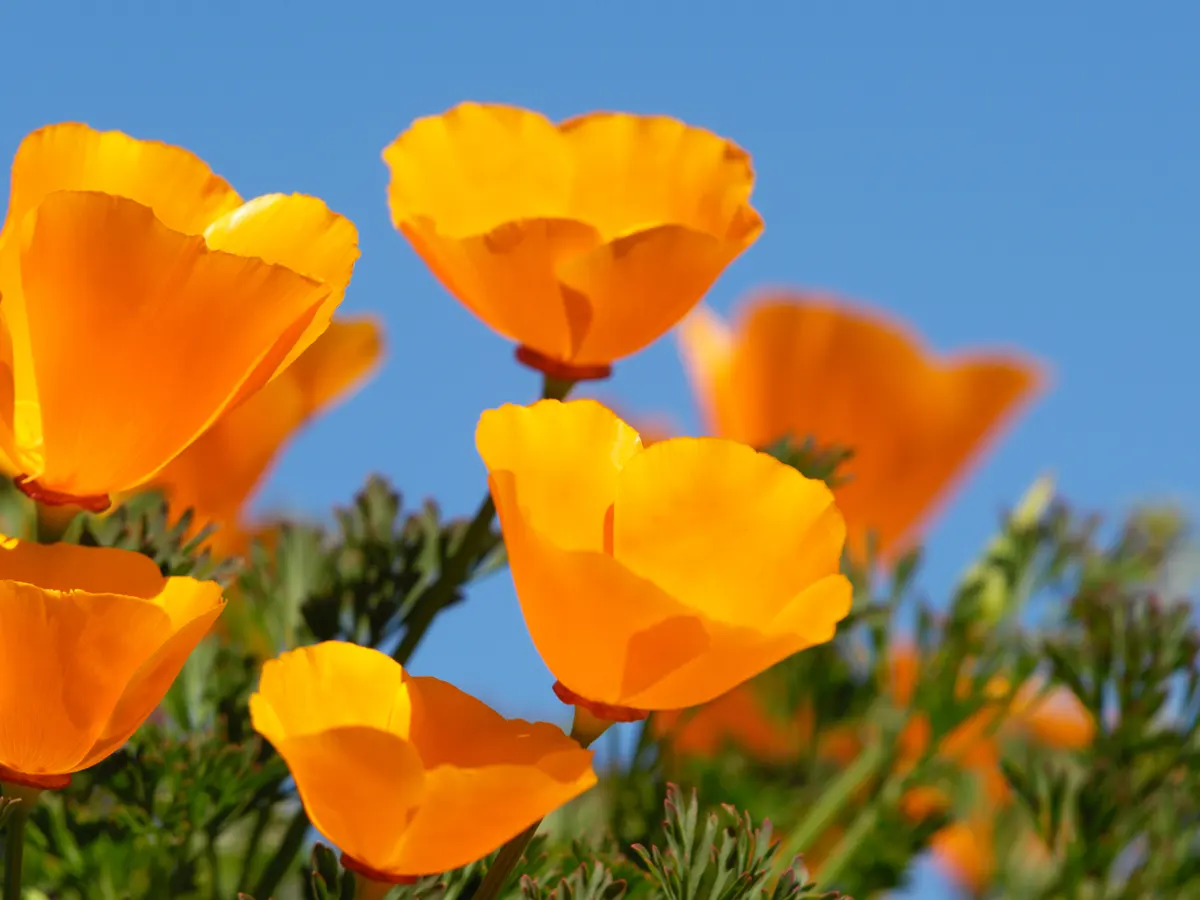
Why Orange Just Works in a Garden
Ever wonder what gives a poppy or a marigold that vibrant punch of color? It comes from natural pigments called carotenoids—yep, the same stuff that makes carrots orange. In the plant world, these pigments are serious multitaskers. They help with photosynthesis by soaking up light energy and even protect the plant from getting sunburned. So when you see a flower with a deep, rich orange hue, you’re looking at a plant that’s probably very healthy and happy.
Light plays a huge role in how we see that color, too. Orange flowers look absolutely breathtaking in the warm, golden light of early morning and late afternoon. It’s like they’re glowing from within. But in the harsh, blueish light of high noon, that same orange can look a little flat. This is why a classic designer trick is to pair orange with deep blues or purples. These complementary colors make each other pop, no matter what time of day it is.
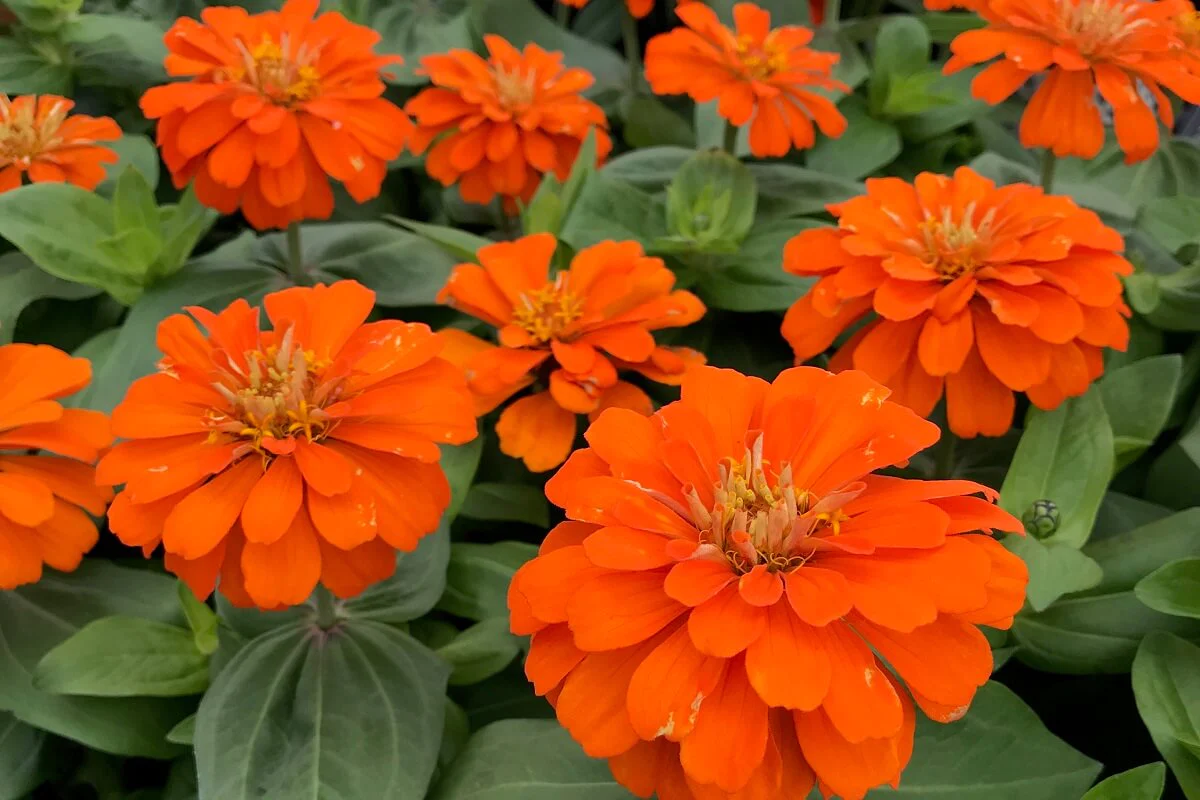
My Go-To Guide for Essential Orange Flowers
Every flower has its own personality, and getting the best results means knowing what it wants. Here’s the inside scoop on some of the most reliable orange flowers I’ve worked with over the years, including the little details that make a huge difference.
1. Marigolds (Tagetes species)
So many of us start our gardening journey with marigolds, and for good reason—they’re tough as nails. But there’s more to them than just being easy to grow. The pros use two main types for very different jobs.
First, you have the smaller, bushier French Marigolds. These are perfect for edging borders. But their real secret weapon is underground. Their roots release a substance that helps fight off root-knot nematodes, which are tiny pests that can wreck vegetable gardens. For years, I’ve told people to plant a border of French marigolds around their tomatoes. It’s a classic companion planting trick that really works.
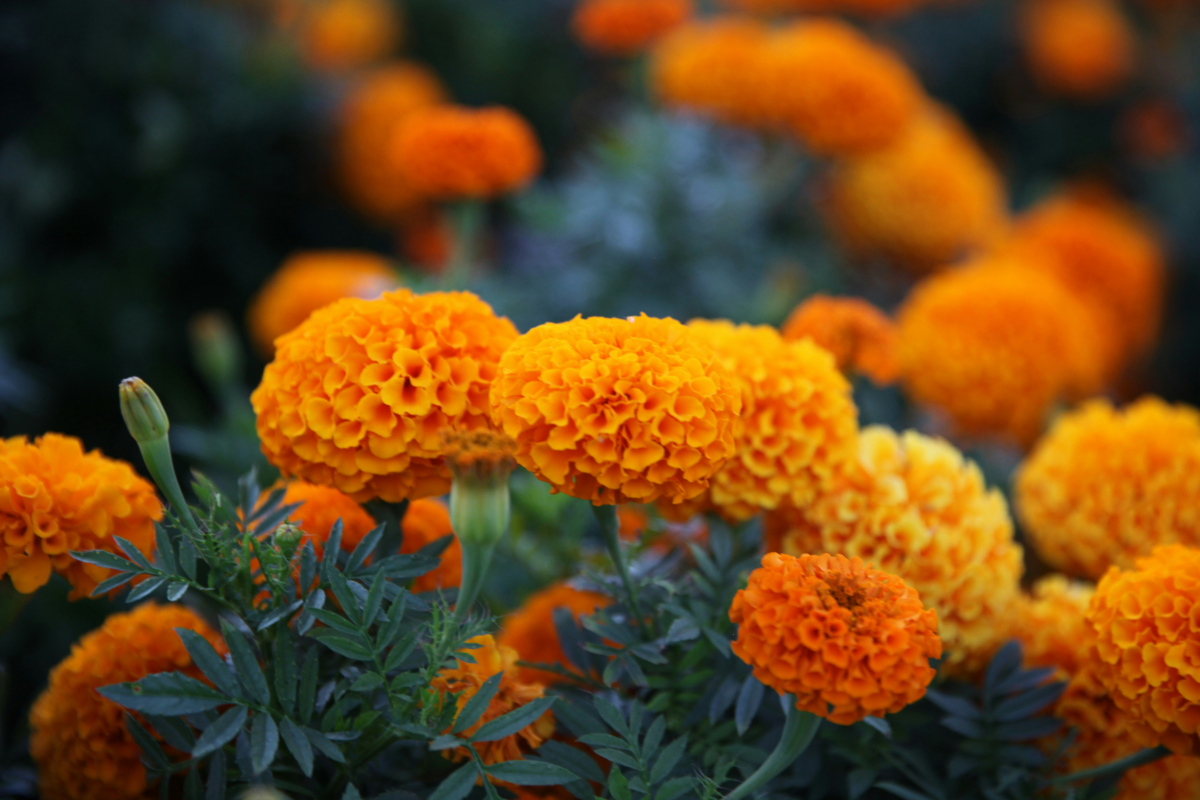
Then there are the tall African Marigolds, which can get up to three feet high with giant, fluffy, pom-pom flowers. Their height makes them perfect for the middle or back of a garden bed.
Pro Tip: Marigolds need at least six hours of full sun to really crank out the flowers. When you plant them, do something that feels wrong: pinch off the first few flower buds. This forces the plant to build a stronger root system and a bushier shape. You’ll be rewarded with ten times the blooms later on.
- Budget: Super affordable. A packet of seeds is usually just a few dollars, maybe $2-$4.
- Heads up! Deer and rabbits generally leave them alone because they hate the strong, pungent smell. By the way, if you’re sensitive to smells, crush a leaf at the nursery before you buy a whole flat of them.
2. California Poppy (Eschscholzia californica)
This is a gorgeous wildflower, and the biggest mistake people make is killing it with kindness. They plant it in rich, pampered soil and water it all the time, which just leads to a bunch of weak leaves and very few of those stunning, silky orange flowers.
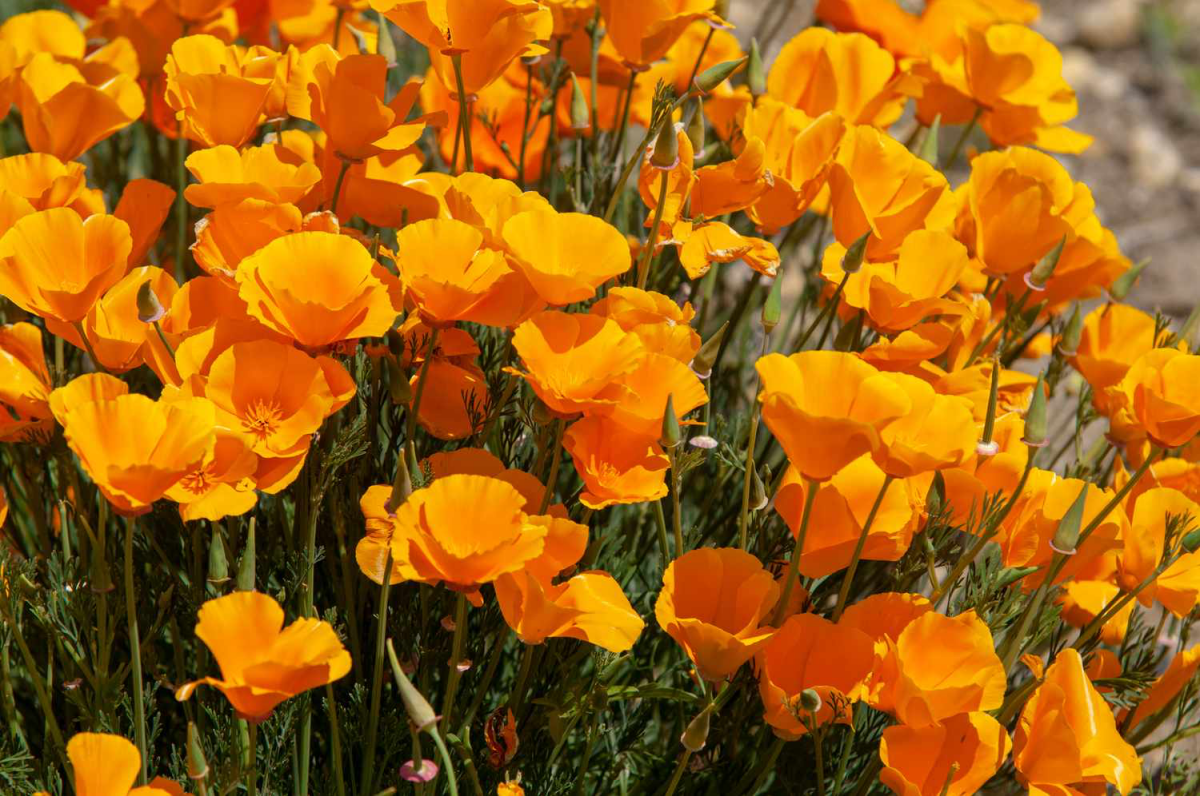
Here’s the deal: California poppies are built for poor, dry soil. Plant them in the sunniest, driest part of your yard—they’re perfect for a rock garden or that dreaded “hellstrip” between the sidewalk and the street. Just scatter the seeds in late fall or very early spring and press them into the soil. They need light to germinate, so don’t bury them.
- Budget: Dirt cheap! You can get a huge packet of seeds for $3-$5.
- Deer & Rabbits? Nope. They are wonderfully deer-resistant.
3. Tiger Lily (Lilium lancifolium)
The Tiger Lily is a timeless classic that brings serious drama to the summer garden with its speckled, recurved orange petals. They grow from a true bulb and have a fascinating trick up their sleeves. In late summer, they form little black “bulbils” where the leaves meet the stem. You can just pick these off, plant them an inch deep, and in a couple of years, you’ll have a whole new plant for free. It’s an easy way to build an impressive colony.
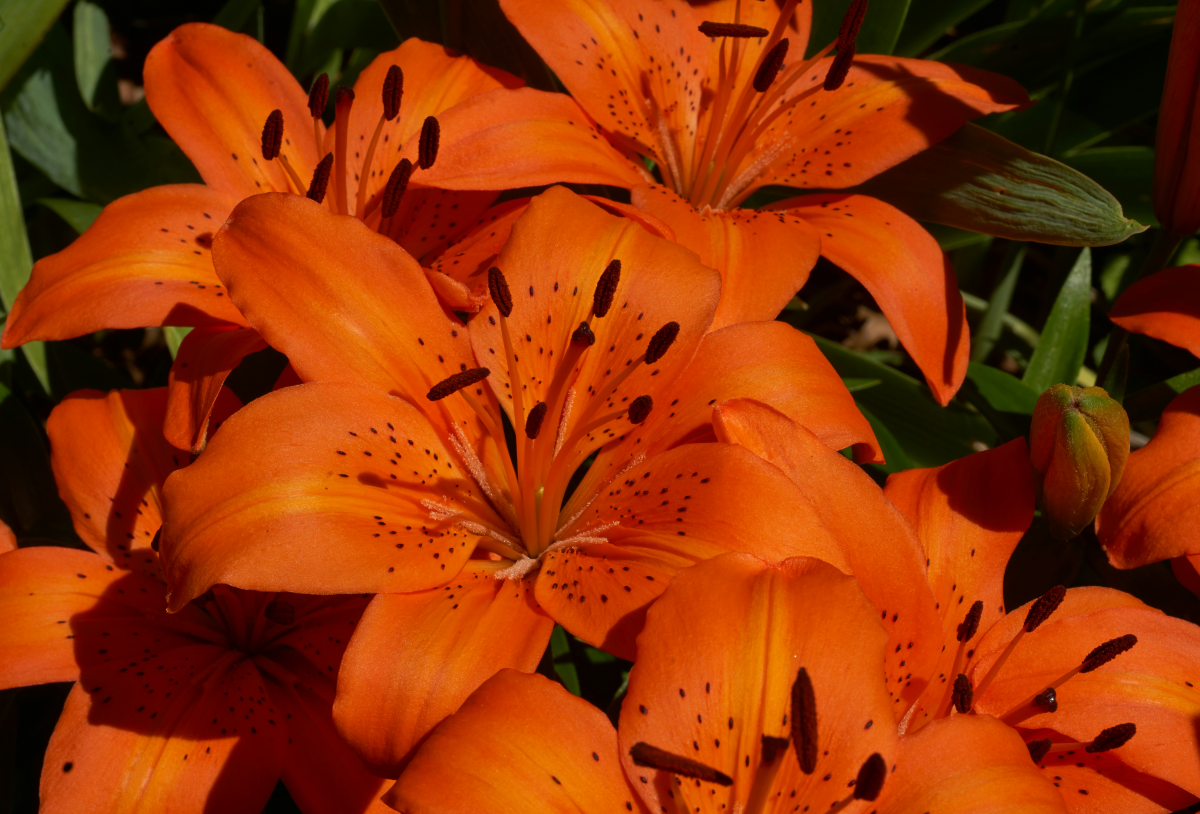
CRITICAL SAFETY WARNING: I cannot say this loudly enough. All parts of any true lily—including the Tiger Lily—are lethally toxic to cats. Even a tiny nibble of a leaf or a bit of pollen can cause kidney failure and death. If you have a cat or if neighborhood cats wander through your yard, please do not plant these. It is a genuine emergency if you suspect ingestion. Quick tip: Program the ASPCA Animal Poison Control number into your phone right now: (888) 426-4435. It’s not worth the risk.
- Budget: A bag of 3-5 bulbs will typically run you $10-$15 at a garden center.
- Deer & Rabbits? Unfortunately, yes. Deer especially find lilies to be a tasty snack.
4. Zinnia (Zinnia elegans)
Zinnias are the workhorses of the hot summer garden, blooming their heads off until the first frost. The biggest problem they face is powdery mildew, that white dusty fungus that shows up in humid weather. The best defense is giving them space. I always tell beginners to ignore the spacing on the plant tag and plant them farther apart—at least 18 inches for the tall varieties. Good air circulation is everything. Also, water them at the base of the plant, not on the leaves!
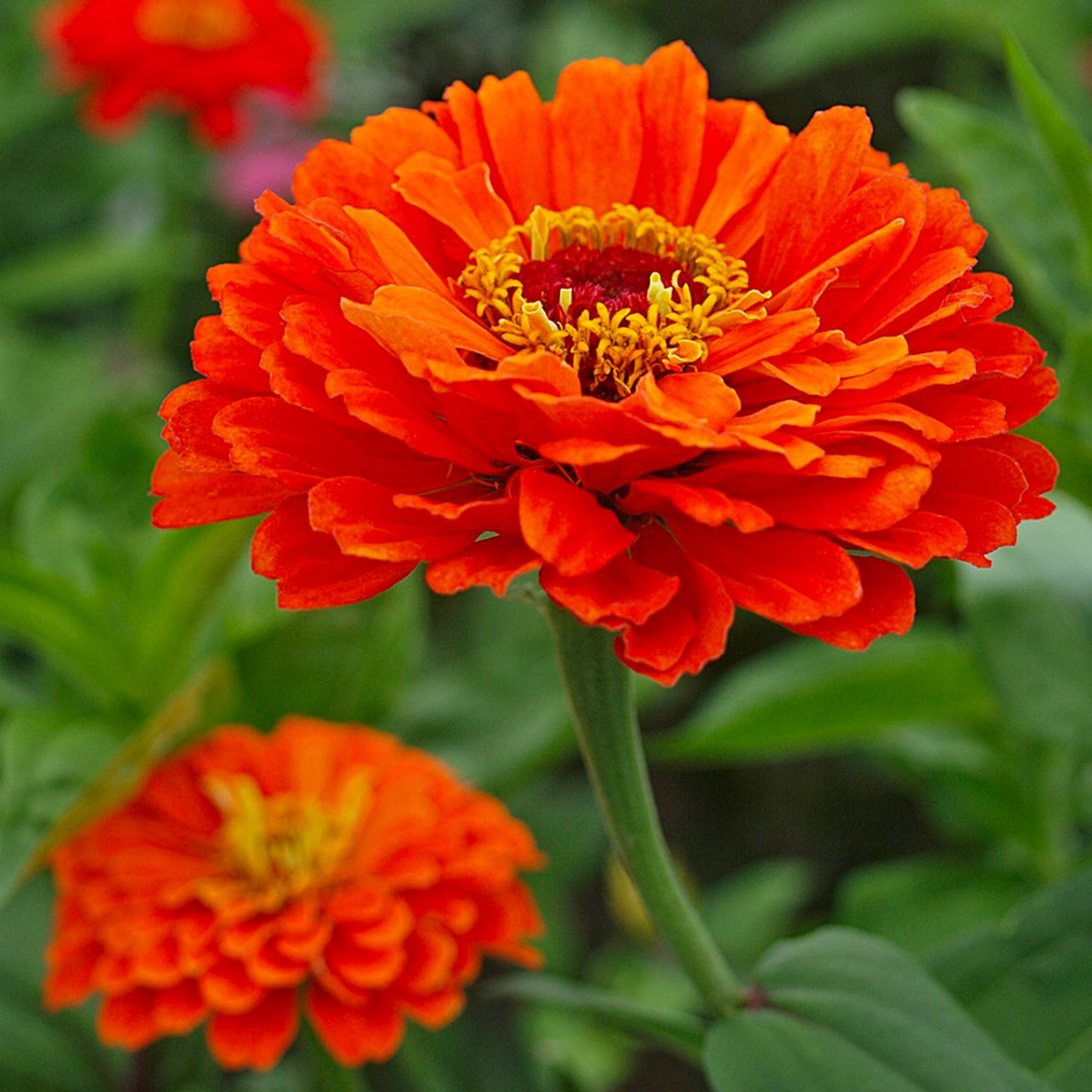
A little-known fact is that many varieties are bred specifically for flower farming, which means you get incredibly strong stems and flowers that last a long time in a vase.
- Budget: Very budget-friendly. Seed packets are around $3-$5, or you can buy a six-pack of small plants for about $5-$8.
- Deer & Rabbits? They are generally deer-resistant, which is a huge plus.
5. Gazania (Gazania rigens)
Also called the Treasure Flower, Gazanias are built for heat and sun. Their flowers are incredible, but they have a funny quirk: they close up at night and on cloudy days. It’s a survival tactic to protect their pollen. Don’t fight it; just appreciate it! Use these tough plants in spots where everything else dies, like along a hot driveway or in a curbside strip with sandy soil. They’ll thank you for the neglect.
- Budget: Usually sold as small plants, running about $4-$7 for a 4-inch pot.
- Deer & Rabbits? Good news! They are very deer and rabbit resistant.
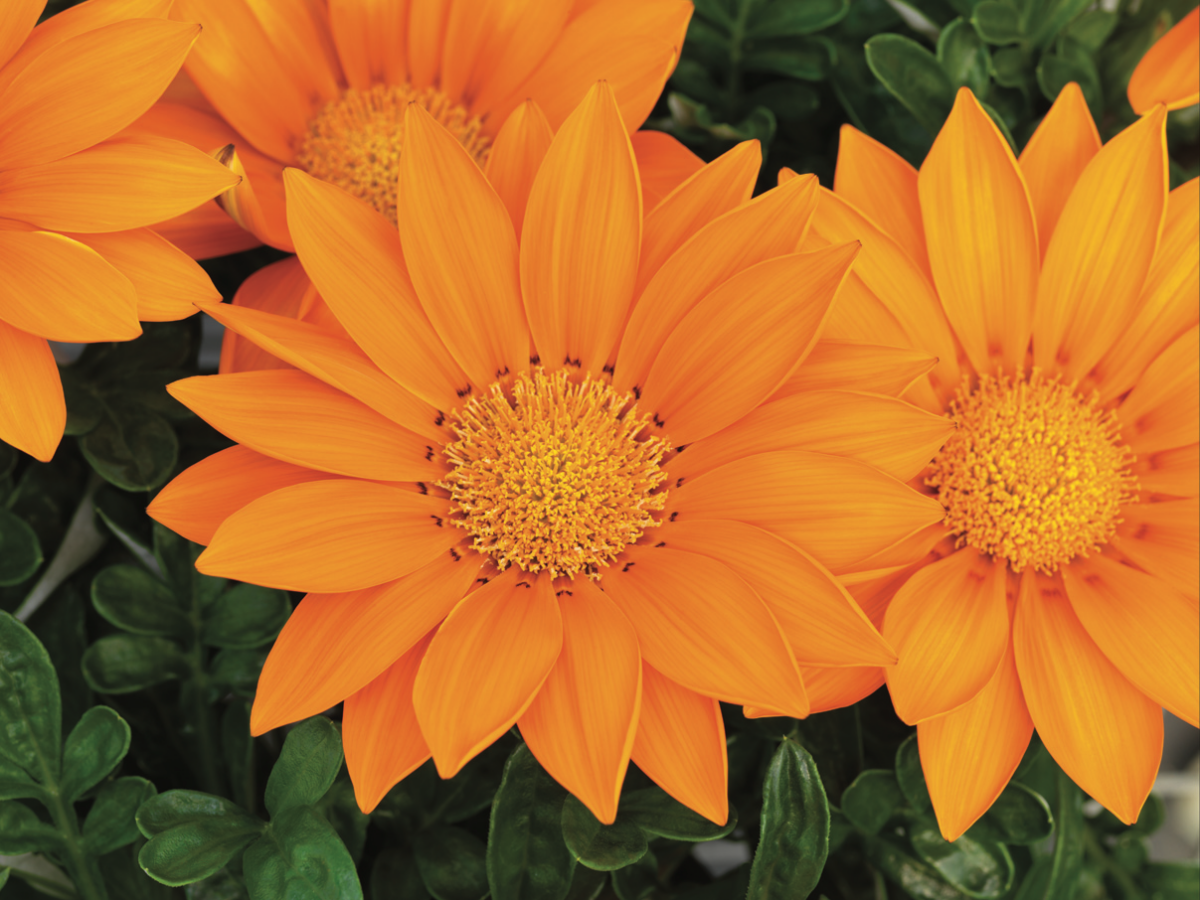
6. Bird of Paradise (Strelitzia reginae)
This iconic tropical plant is a showstopper, but it comes with a major catch. It’s only suited for growing in the ground year-round in the absolute warmest climates (think USDA Zones 10-12). For everyone else, this is a container plant that spends summers on the patio and winters indoors. You must have a plan for where to put this big guy inside!
I often hear people complain that theirs won’t bloom. The two biggest culprits are not enough light and too big of a pot. Indoors, it needs your sunniest window. And they actually bloom best when their roots are a little crowded. Only repot it when it’s busting out of its current home. For a good container mix, I use regular potting soil but add a few extra handfuls of perlite and orchid bark to make sure it drains really well.
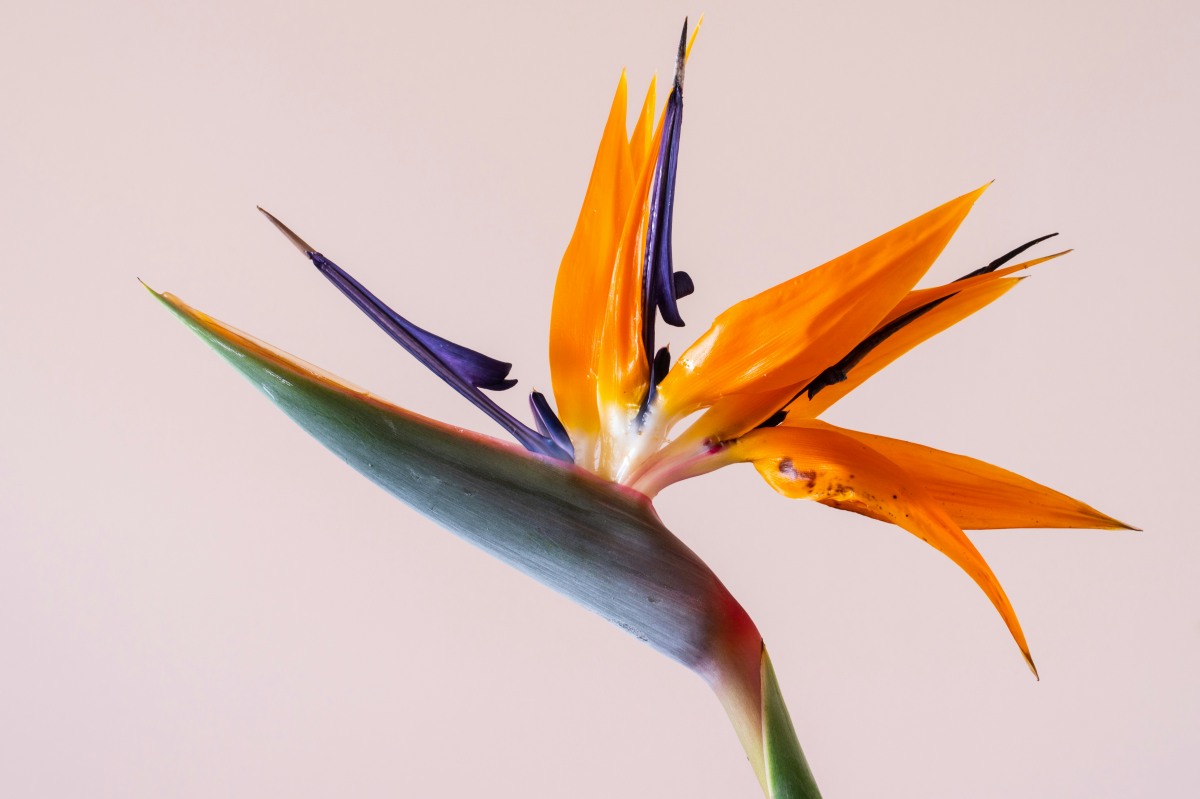
- Budget: This is more of an investment. A decent-sized plant can cost anywhere from $30 to $100+.
- Deer & Rabbits? Not an issue, as it’s typically protected indoors or on a patio.
7. Chrysanthemum (Chrysanthemum spp.)
Mums are the absolute symbol of autumn. But there’s a big difference between the types you can buy. Those perfect, dome-shaped mums at the grocery store in fall are ‘florist mums.’ They’re grown in a greenhouse, have weak roots, and are basically meant to be temporary decorations.
If you want mums that come back every year, you need to buy ‘hardy’ or ‘garden mums’ from a real nursery and—this is the important part—plant them in the spring. This gives them a whole season to get established. To get that classic bushy shape, you need to pinch off the top inch of each stem starting in spring. Keep doing it every few weeks until about mid-summer, then stop so the plant can form flower buds for its autumn show.
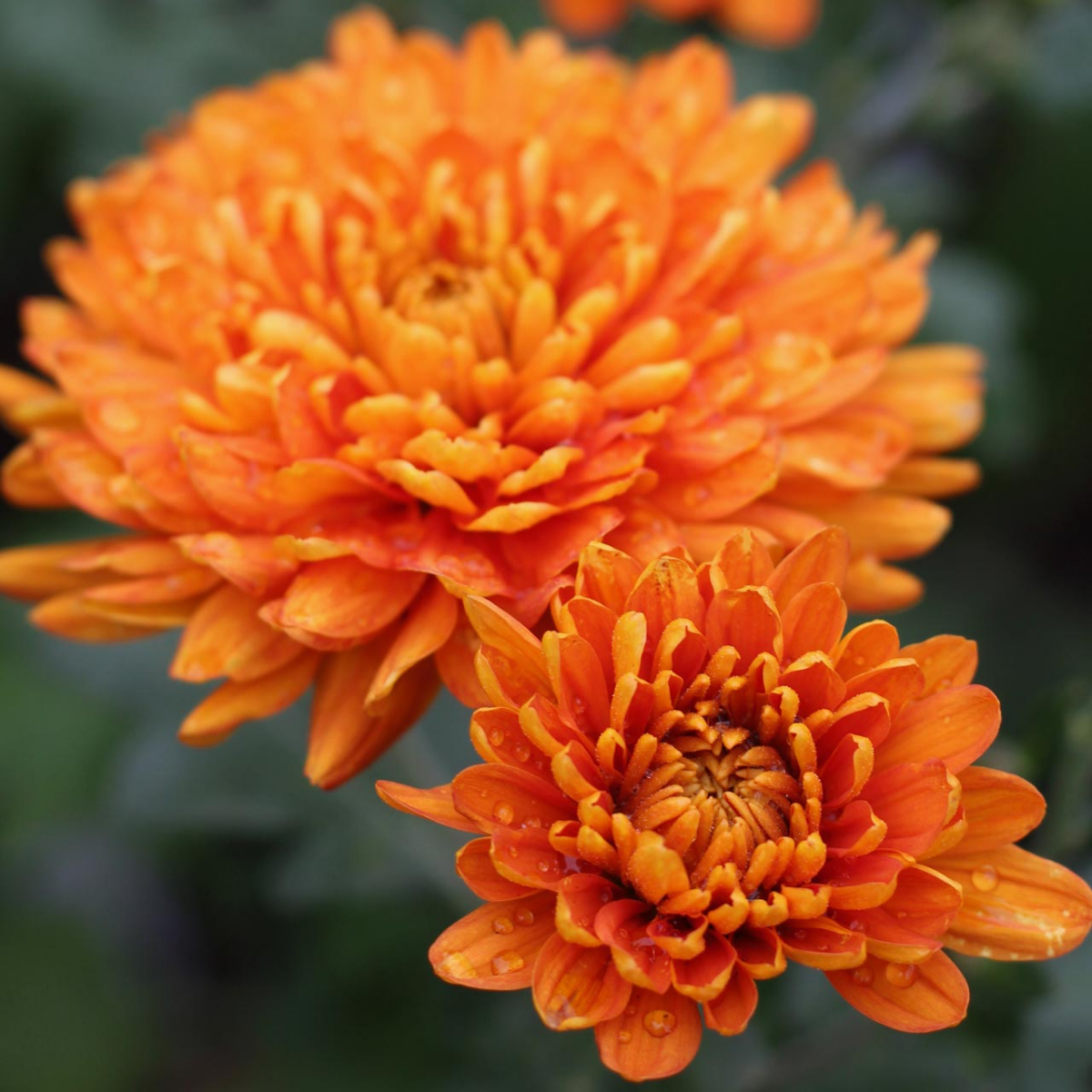
- Budget: A hardy mum plant in the spring might cost $8-$15. The fall florist mums are cheaper, but they’re disposable.
- Deer & Rabbits? Unfortunately, mums are like candy to deer. You’ll need repellent if deer are common in your area.
8. Crocosmia
For adding height, texture, and movement, it’s hard to beat Crocosmia. They have arching, sword-like leaves and send up wiry stems of fiery, hummingbird-attracting flowers in mid-summer. After a few years, the clump might get crowded and flower less. That’s your cue to divide them in the fall or early spring. Just lift the whole clump, break the corms (they look like little bulbs) apart, and replant them. Free plants!
Good to know: In some mild, wet climates, certain types can spread a bit too enthusiastically. It’s always smart to check if a plant is considered aggressive in your specific area before planting.
- Budget: You can buy a bag of corms for around $10-$20, depending on the variety.
- Deer & Rabbits? A huge win here—they are reliably deer and rabbit resistant.

9. Dahlia
Ah, dahlias. The undisputed queens of the late summer garden. The variety is just staggering. But let’s be real: they are a commitment. They are heavy feeders and need consistent water. From my experience, I give mine a low-nitrogen fertilizer, like a 5-10-10 blend, every few weeks once buds appear. You want flowers, not just a giant leafy bush!
The tall varieties absolutely must be staked. Use a sturdy 5-6 foot metal or bamboo stake put in the ground when you plant the tuber. As it grows, tie the main stem to the stake loosely with garden twine so you don’t choke it. In any region where the ground freezes, you have to dig up the tubers in the fall and store them in a cool, dark place for the winter.
- Budget: Varies wildly. You can find basic tubers for around $8, but a single tuber of a new, fancy variety can easily cost $25 or more.
- Deer & Rabbits? They are sometimes bothered by deer, especially the new, tender growth. It’s a bit of a gamble.
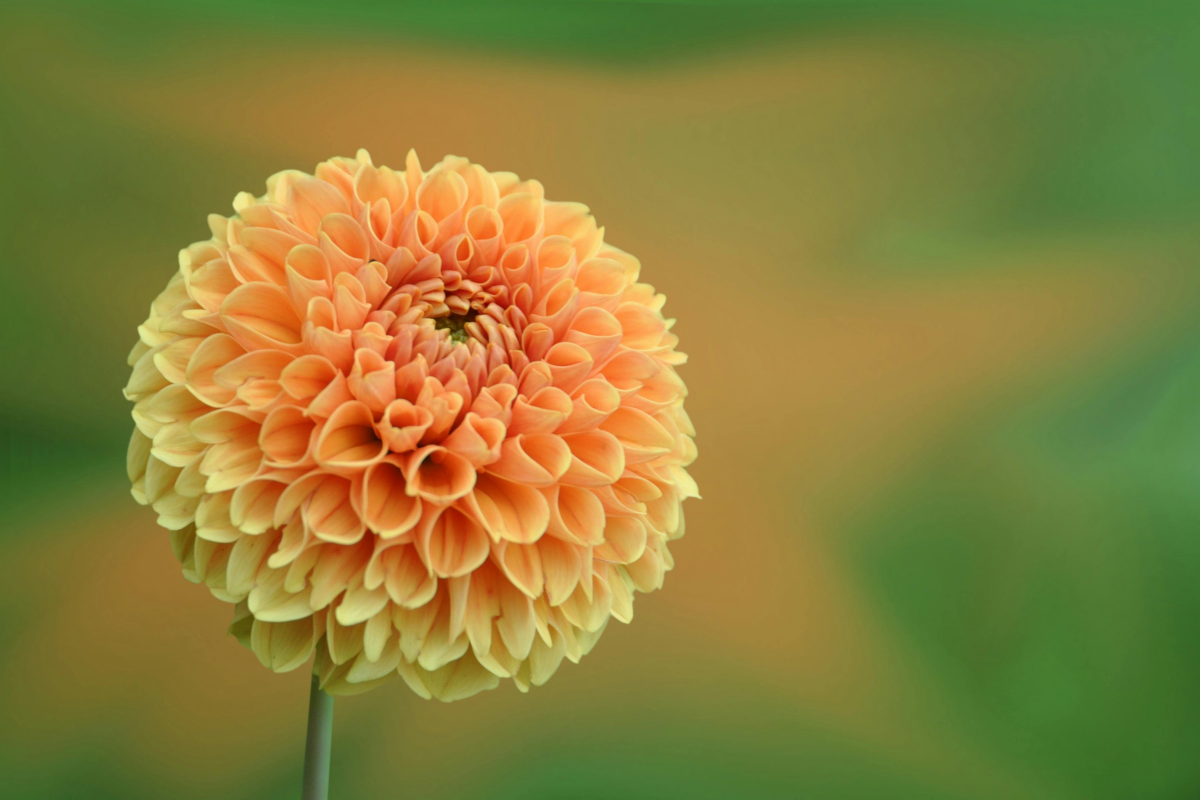
10. Icelandic Poppy (Papaver nudicaule)
Unlike their bolder red cousins, Icelandic poppies offer delicate, crepe-paper petals in soft, beautiful shades of orange and apricot. They are technically short-lived perennials but are best treated as cool-season annuals because they hate summer heat. In warmer climates, plant them in the fall for a spectacular spring bloom. In the north, sow seeds in early spring.
Florist’s Secret: To make them last in a vase, harvest them just as the bud is cracking open. Immediately take a lighter and sear the cut end of the stem for a couple of seconds. This stops the milky sap from leaking and helps the flower drink water, doubling its vase life.
- Budget: Seed packets are very inexpensive, typically in the $3-$5 range.
- Deer & Rabbits? Poppies are another great deer-resistant choice.
So, Which Orange Flower is Right for You?
Using orange well is all about balance. A whole garden of nothing but bright, hot colors can feel a bit chaotic. Think of orange as your special guest star.
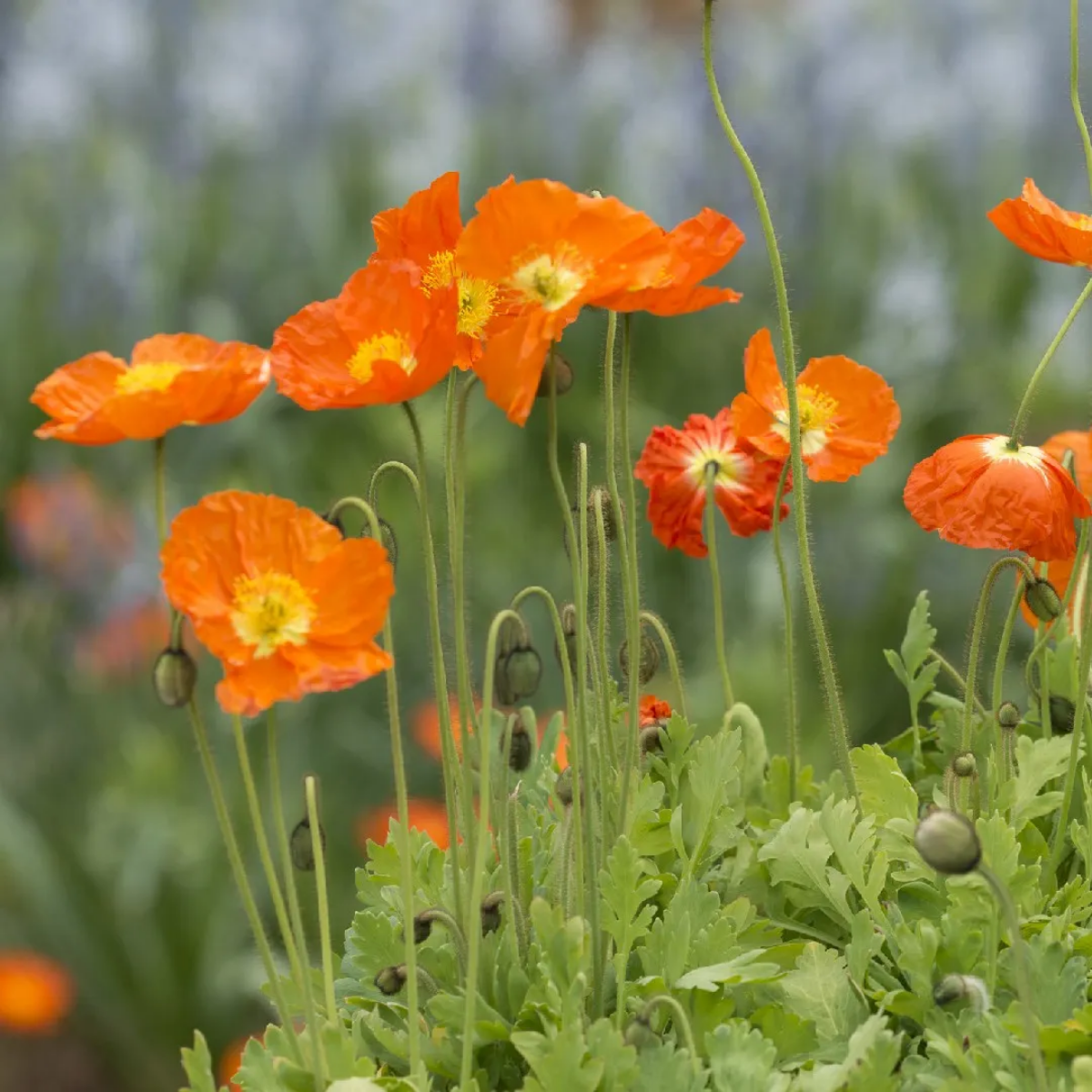
So how do you choose? Let’s break it down by effort.
If you’re looking for easy, low-maintenance color, your best bets are Marigolds, California Poppies, and Gazanias. These guys thrive on a bit of neglect and are perfect for beginners or anyone with a hot, sunny spot. Plus, they’re all great at keeping deer away.
For those who want a bit more of a medium-effort, high-reward plant, look to Zinnias and Crocosmia. They require a little attention—like proper spacing for zinnias or dividing crocosmia every few years—but the payoff in flowers is huge. They are also fantastic, deer-resistant choices.
And for the gardener who loves a project and wants a true high-maintenance showstopper, then Dahlias and garden Mums are for you. They demand regular feeding, staking, pinching, and, in the dahlia’s case, winter storage. It’s a labor of love, but the spectacular fall display is worth every second. Just be ready to defend them from deer!
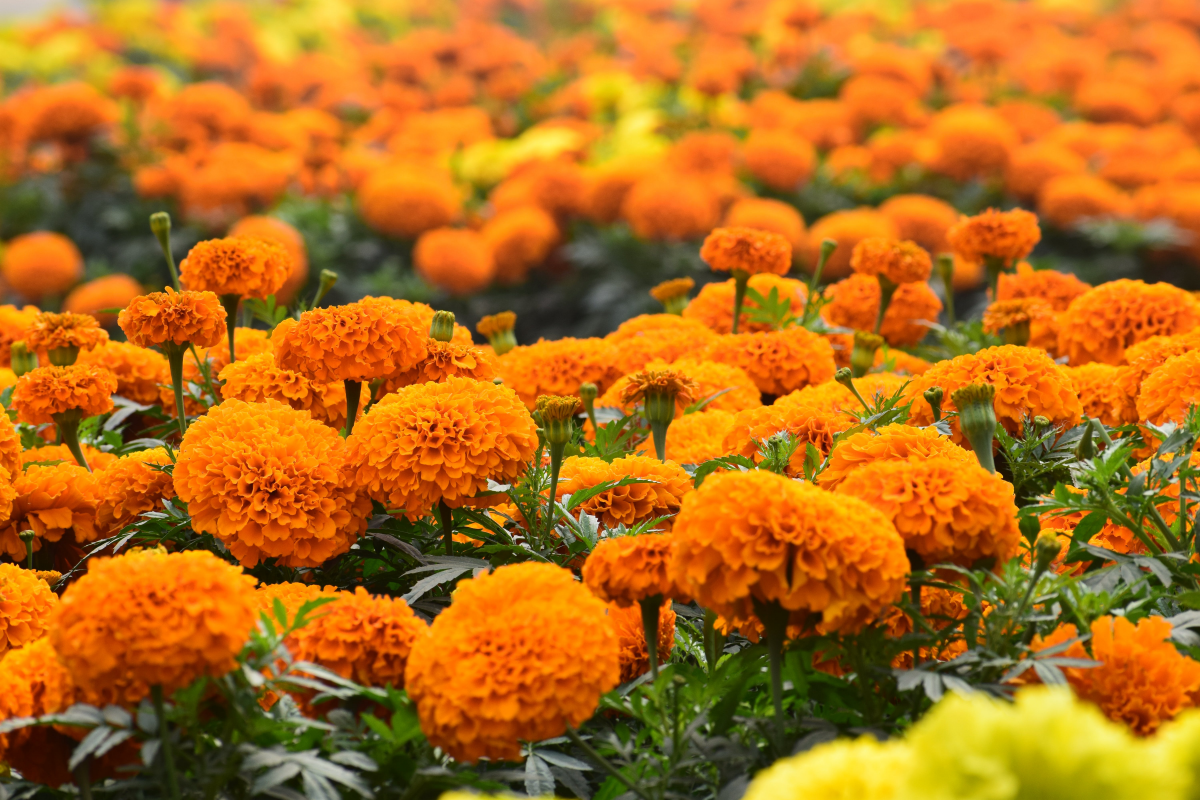
Don’t be afraid to just try something. A garden is a living, breathing space, not a perfect painting. Even after all these years, I have failures. A plant doesn’t like where I put it, a color combo looks better in my head… it’s all part of the fun. The most important thing is to get out there, observe what your plants need, and enjoy the incredible energy that a splash of orange can bring to your world.
Inspirational Gallery
Did you know that bees perceive the color orange as a muted, yellowish hue? While they are most attracted to blue and purple, the strong yellow tones in orange flowers still make them a reliable beacon for pollinators searching for nectar.
This means that by planting orange blooms like poppies and zinnias, you’re not just creating visual drama; you’re also setting out a clear and attractive landing pad for the bees and butterflies that are crucial for a healthy garden ecosystem.
For a quick, season-long burst of color: Choose an annual like the ‘Profusion Orange’ Zinnia. It’s a workhorse that blooms continuously from summer until the first frost, perfect for filling gaps or in containers. It requires replanting each year.
For a lasting investment: Opt for a perennial like Geum ‘Totally Tangerine’. It will return year after year, offering delicate, airy wands of soft orange flowers in late spring and often reblooming through summer. It establishes a permanent presence in your garden bed.
One of the most sophisticated ways to use orange is by pairing it not with other flowers, but with foliage. The deep, moody purples of a ‘Palace Purple’ Heuchera or the silvery-blue blades of a Blue Fescue grass create a stunning, modern backdrop that makes a simple clump of orange tulips or a single ‘Tropicanna’ Canna Lily look like a piece of living art.
Why do my vibrant orange flowers sometimes look dull or washed out?
This often comes down to two factors: soil health or sun exposure. A lack of phosphorus in the soil can lead to less vibrant blooms. A dose of a phosphorus-rich fertilizer, like a bone meal mixture, early in the season can intensify the color. Alternatively, some delicate orange petals, like those on certain poppies, can get bleached by intense, direct afternoon sun. Providing a bit of dappled shade during the hottest part of theday can preserve their rich, saturated tone.
- They provide a long-lasting, ‘spiller’ effect in pots.
- The flowers and leaves are entirely edible, adding a peppery kick to salads.
- They act as a ‘trap crop’, luring aphids away from more precious plants like roses.
The secret? The humble Nasturtium. A packet of seeds costing just a few dollars can yield a season’s worth of vibrant orange cascades.
Create a show-stopping container garden by going all-in on orange. This technique, called monochromatic planting, uses a single color in varied tints, tones, and textures. For a ‘thriller, filler, spiller’ combination, try a tall, dramatic ‘Orange Brilliant’ Canna Lily in the center, surround it with the fluffy, consistent blooms of ‘Bonanza’ Marigolds, and let a trailing ‘Orange’ Calibrachoa spill over the sides. The result is a bold, cohesive, and incredibly chic statement piece for any patio or balcony.
The connection between the Netherlands and the color orange isn’t just about soccer jerseys. It stems from the royal House of Orange-Nassau. This national pride fueled the cultivation of orange plants, most famously the carrot (which were originally purple and white) and, of course, tulips. Today, planting orange tulips like the classic ‘Prinses Irene’ or the fringed ‘Lambada’ is a nod to centuries of horticultural history and a nation’s love affair with a color.
A study in the journal *Oecologia* confirmed that the carotenoid pigments giving orange flowers their color also protect them from UV damage, acting as a natural sunscreen.
There’s a special magic in an orange-flowered garden during the ‘golden hour.’ As the sun sets, its warm, low-angled light filters through the petals of Eschscholzia californica (California Poppies) or Daylilies, making them appear to glow from within. The intense orange absorbs the golden rays and reflects them back with an almost supernatural incandescence. It’s a fleeting, deeply atmospheric moment that transforms the garden into a warm, immersive, and tranquil space.
Garden designers are currently obsessed with ‘dusty’ or ‘muddy’ oranges. Forget the traffic-cone brights; think of the subtle, complex tones found in varieties like the ‘Queeny Lime Orange’ Zinnia or the ‘Brownie’ Tulip. These flowers have an antique, painterly quality, with hints of terracotta, bronze, and even lime green, allowing them to blend beautifully into sophisticated, naturalistic planting schemes.










